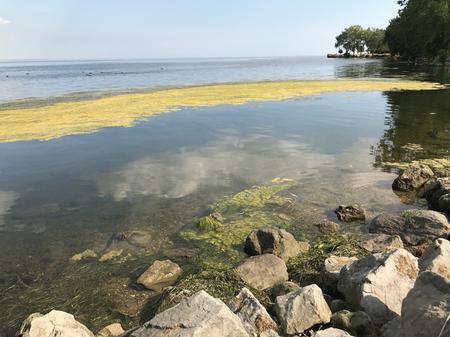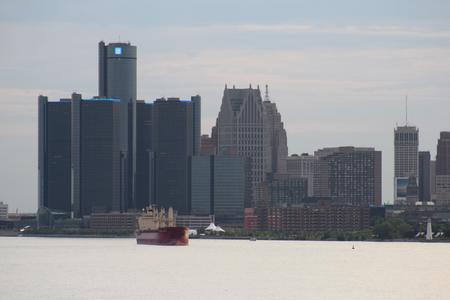How the Government Shutdown Leaves the Great Lakes in Limbo
The lack of support from government entities is being felt from shipping lanes to the shores of Lake Erie.


As politicians on Capitol Hill continue their staring contest, federal entities such as the National Oceanic and Atmospheric Administration (NOAA) remain closed. The shutdown is affecting the Cooperative Institute for Great Lakes Research’s (CIGRL) ability to prepare for algae season.
The group relies on NOAA funding for its instrumentation — used to monitor algal blooms in Lake Erie. Among its critical functions, the CIGRL sends alerts to water systems when the blooms threaten public health.
Brad Cardinale is director of the institute. He says algae produces a neurotoxin that dissolves in water and, while it can be treated, is extremely costly to filter out.
“Very few water facilities and treatment plants in the United States have the ability to get those small neurotoxins out of the water,” says Cardinale. “Those neurotoxins can be pretty potent. They can cause a variety of neurological conditions.”
CIGRL’s alerts provide treatment facilities with the advanced warning they need to either switch water systems, or prepare special treatment efforts to combat the neurotoxin. But if the federal government doesn’t reopen in the next month, Cardinale says the institute won’t be ready to send out alerts when algal blooms start forming in the spring.

The federal shutdown also impacts the institute’s ability to forecast ice coverage and snowfall on the Great Lakes. That means freighters are sailing with out-of-date information as they wrap up the shipping season.
“We collect the data,” Cardinale explains. “We update the model, but NOAA’s models are all shutdown and are not accessible. So the shipping industry is operating under last year’s ice forecast, which, if I’m driving a big expensive ship, that’s not particularly comforting to me.”
While the institute will be able to update the forecast as soon as the federal government shutdown ends, some of the groups other projects won’t be as sure of a thing. That includes efforts to keep invasive species, like the Asian silver flying carp, out of the Great Lakes.
Cardinale says CIGLR uses something called environmental DNA to monitor the fish.
“We can tell where it happens to be at and where it happens to be going. And we do models to forecast where it will head if it happens to get into the Great Lakes, which allows us to mount a very quick response to try to contain or eradicate it.”
But as long as the federal government remains shutdown, all of those tools are offline. Cardinale says if the Asian silver flying carp was to enter the ecosystem during this time, it would be able to advance undetected.
“There is a danger that with invasive species, [and] oil spills would be another example. If a catastrophe happens while the government is shut down, there’s really no going back.”
In Washington D.C., the staring contest has now lasted for more than a month.

